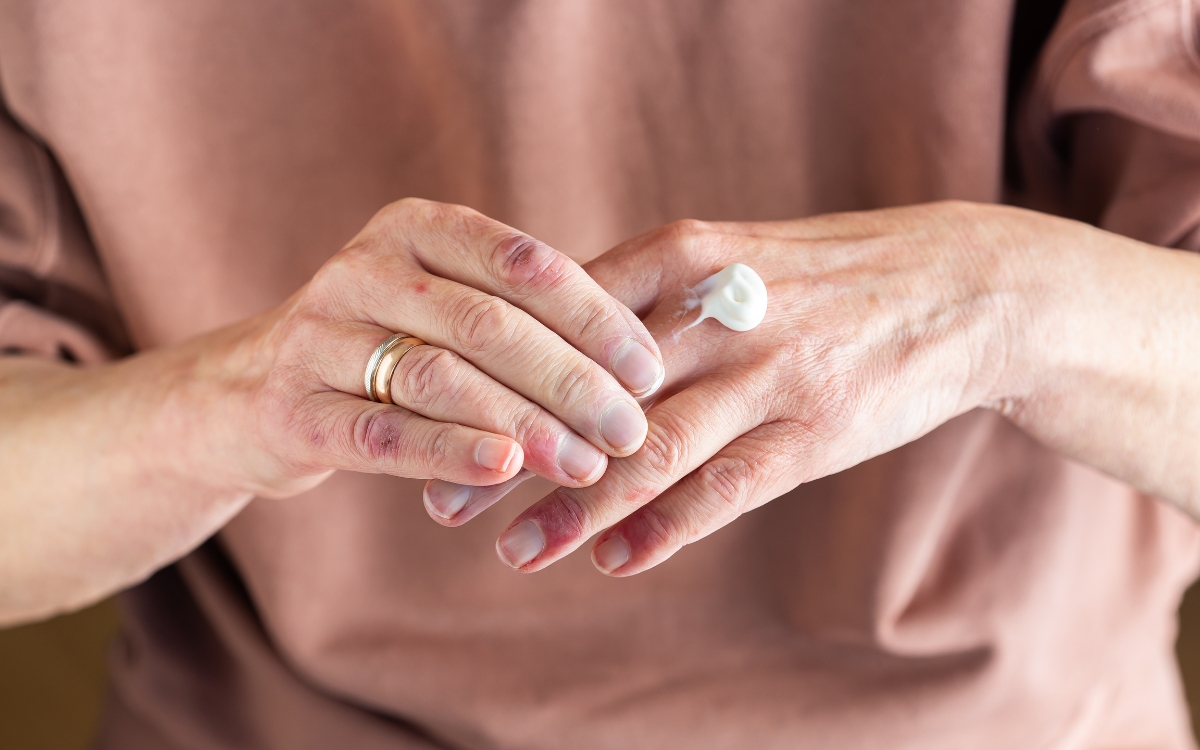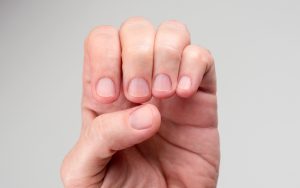Many of us love the beauty and elegance that nail care brings to our lives. Whether it’s getting a manicure at a salon or simply enjoying the process of painting our nails at home, it’s an art form that allows us to express ourselves creatively. However, for some individuals, this seemingly harmless activity can lead to unpleasant reactions.

Nail allergies and sensitivities are more common than you might think, and it’s essential to be aware of their causes, symptoms, and how to manage them. In this article, we will delve into the world of nail allergies and sensitivities, providing you with valuable insights to help you understand and navigate this issue.
What are Nail Allergies and Sensitivities?
Nail allergies and sensitivities are conditions that occur when an individual’s immune system reacts negatively to certain substances commonly found in nail care products. While the terms “allergy” and “sensitivity” are often used interchangeably, there are subtle differences between the two.
Nail Allergies
Nail allergies occur when the immune system mistakenly identifies specific substances in nail products as harmful. This triggers an immune response, leading to an allergic reaction. Common allergens in nail products include formaldehyde, toluene, dibutyl phthalate (DBP), and various acrylates.
When exposed to these allergens, individuals may experience redness, itching, swelling, or even blisters on and around the nails. In some cases, allergic reactions can spread beyond the nails to other areas of the body.
Nail Sensitivities
Nail sensitivities, on the other hand, involve a non-immunological response to certain substances in nail care products. Sensitivities may cause similar symptoms to allergies, such as redness, itching, or swelling, but they typically occur without involving the immune system.
Sensitivities can be triggered by various factors, including direct contact with irritants or prolonged exposure to certain chemicals. It’s important to note that sensitivities can sometimes develop into full-blown allergies over time.
Signs and Symptoms of Nail Allergies and Sensitivities
Recognizing the signs and symptoms of nail allergies and sensitivities is essential for prompt identification and appropriate management. While the specific reactions can vary from person to person, there are some common indicators to be aware of.
Skin Redness and Irritation
One of the primary symptoms of nail allergies and sensitivities is redness and irritation around the nails. This may manifest as a patchy, inflamed appearance or a generalized redness in the nail bed and surrounding skin. The affected area may feel warm to the touch and may be accompanied by itching or a burning sensation.
Swelling and Inflammation
In more severe cases, nail allergies and sensitivities can cause swelling and inflammation. The fingers or toes may appear puffy, and the skin around the nails may become visibly swollen. This can result in discomfort or pain, particularly when pressure is applied to the affected area.
Itching and Discomfort
Many individuals with nail allergies or sensitivities experience persistent itching and discomfort. The itching sensation can be localized to the nails themselves or extend to the surrounding skin. The urge to scratch the affected area can be intense, leading to potential skin damage and further irritation.
Blisters and Pustules
In certain instances, nail allergies can lead to the formation of blisters or pustules. These fluid-filled sacs may appear on the nail plate, cuticles, or surrounding skin. Blisters can be painful and may rupture, potentially increasing the risk of infection if not properly managed.
Nail Changes
Nail allergies and sensitivities can also cause noticeable changes in the appearance and texture of the nails. Common nail changes include brittleness, thinning, ridges, or a rough, pitted surface. In some cases, nails may become discolored or develop white spots.
Common Triggers for Nail Allergies and Sensitivities
Identifying the common triggers for nail allergies and sensitivities is crucial in understanding how to avoid or minimize exposure to these substances. Several factors can contribute to allergic reactions and sensitivities in relation to nail care products.
Nail Polish Ingredients
Nail polishes often contain ingredients that can trigger allergies and sensitivities. Some of the common culprits include formaldehyde, toluene, dibutyl phthalate (DBP), and various acrylates. These chemicals are used for purposes such as preserving the polish, providing gloss, or enhancing durability. However, they can lead to adverse reactions in susceptible individuals.
Nail Polish Removers
Nail polish removers typically contain acetone or other solvents, which can be potential triggers for allergies and sensitivities. Acetone, in particular, is known for its strong and drying properties, which can irritate the skin and nails. Non-acetone removers may be a milder alternative for individuals with sensitivities, although they may still contain other potential irritants.
Adhesives and Artificial Nails
Adhesives used for artificial nails, such as those used in acrylic or gel nail applications, can contain chemicals that may cause allergic reactions. The substances present in the adhesives or primers, such as methacrylates or cyanoacrylates, can lead to skin irritation or allergies in some individuals. Additionally, the prolonged use of artificial nails or frequent nail extensions can weaken the natural nail, making it more prone to sensitivities.
Occupational Hazards
Certain professions or occupations that involve frequent exposure to chemicals or irritants can increase the risk of nail allergies and sensitivities. Nail technicians, for example, may be more susceptible due to constant contact with nail care products. Similarly, individuals working in industries such as cleaning, healthcare, or manufacturing may encounter substances that can trigger reactions.
Environmental Allergens
In some cases, external environmental allergens can also contribute to nail allergies and sensitivities. These allergens can include pollen, dust mites, mold spores, or certain metals. Individuals who have existing allergies or sensitivities to these environmental triggers may experience reactions on their nails as well.
Prevention and Management of Nail Allergies and Sensitivities
Preventing and managing nail allergies and sensitivities is essential to maintain healthy nails while minimizing the risk of adverse reactions. By implementing proactive measures and making informed choices, individuals can enjoy nail care without compromising their well-being. Here are some strategies for prevention and management:
Avoiding Allergens and Irritants
Read Product Labels
Carefully read the labels of nail care products, including nail polishes, removers, and adhesives. Look for products that are labeled as hypoallergenic or free from common allergens such as formaldehyde, toluene, DBP, and specific acrylates.
Patch Testing
Before using a new product, perform a patch test on a small area of skin to check for any adverse reactions. Apply a small amount of the product and observe the area for at least 24 hours. If any signs of redness, itching, or irritation occur, avoid using the product on your nails.
Opt for Alternative Products
Consider using water-based or breathable nail polishes as alternatives to conventional formulas. These types of polishes may be less likely to cause allergies or sensitivities. Look for brands that specifically cater to individuals with sensitivities.
Proper Nail Care and Hygiene
Keep Nails Clean and Dry
Maintain good nail hygiene by regularly cleaning your nails and keeping them dry. Moisture can increase the likelihood of fungal infections and irritations. Dry your nails thoroughly after washing and avoid prolonged exposure to water.
Trim and Shape Nails Carefully
Trim your nails regularly using clean, sharp nail clippers or scissors. File the edges gently to smooth out any rough spots. Avoid overly aggressive filing, as it can weaken the nails and make them more susceptible to sensitivities.
Moisturize Nails and Cuticles
Apply a nourishing cuticle oil or cream to keep your nails and cuticles moisturized. Hydrated nails are less prone to dryness, cracking, and potential sensitivities. Choose products that are free from potential irritants and fragrance.
Seeking Professional Help
Consult a Dermatologist or Allergist
If you suspect that you have nail allergies or sensitivities, seek professional advice from a dermatologist or allergist. They can provide a comprehensive evaluation, diagnose your condition accurately, and recommend appropriate treatments or alternative products.
Allergy Testing
In some cases, allergy testing may be recommended to identify specific triggers. Patch testing or skin prick tests can help determine the substances that cause allergic reactions. This information can guide you in avoiding these allergens in your nail care routine.
Medical Treatments
In severe cases of nail allergies or sensitivities, your healthcare professional may prescribe medications to manage symptoms or recommend treatments such as topical corticosteroids or antihistamines. These interventions can help alleviate discomfort and reduce inflammation.
Tips for Enjoying Nail Care with Allergies and Sensitivities
While living with nail allergies or sensitivities can be challenging, it doesn’t mean you have to give up on your love for beautiful nails. With some adjustments and careful choices, it’s still possible to enjoy nail care while minimizing the risk of adverse reactions. Here are some tips to help you navigate nail care with allergies and sensitivities:
Safe Product Selection
Water-Based Polishes
Consider using water-based nail polishes instead of traditional solvent-based formulas. Water-based polishes are often less likely to contain allergens and harsh chemicals, making them a safer option for individuals with sensitivities.
Hypoallergenic Brands
Look for nail care brands that specifically cater to individuals with allergies or sensitivities. These brands often prioritize using hypoallergenic ingredients and omit common irritants from their formulas.
Nail Art Alternatives
Non-Toxic Nail Decorations
Explore non-toxic nail decorations and embellishments that are less likely to cause allergies or sensitivities. Look for options such as adhesive nail art stickers or designs made from hypoallergenic materials like silicone or paper.
Natural Nail Art
Embrace natural nail art by experimenting with different shades, finishes, and textures. Explore techniques like nail stamping, freehand designs, or simple patterns using non-allergenic polishes to express your creativity without compromising your nail health.
Protective Measures
Use Protective Gloves
When engaging in activities that may expose your nails to potential irritants or allergens, such as cleaning or gardening, wear protective gloves to minimize direct contact with these substances. This can help reduce the risk of triggering allergic reactions or sensitivities.
Barrier Products
Consider using protective barrier products on your nails and cuticles before applying nail polish or other potentially allergenic products. These barriers can create a protective layer between your nails and the product, reducing direct contact and potential sensitivities.
Regular Maintenance and Monitoring
Monitor Your Nails
Keep a close eye on your nails for any changes or signs of irritation. Regularly check for redness, swelling, itching, or other unusual reactions. Early detection can help you identify triggers and take necessary precautions promptly.
Maintain Healthy Nails
Adopt a nail care routine that promotes overall nail health. This includes keeping nails trimmed, moisturized, and avoiding habits such as biting or picking at the nails, which can increase the risk of sensitivities or infections.
Conclusion
Nail allergies and sensitivities can be frustrating and uncomfortable, but with the right knowledge and precautions, you can still enjoy beautiful nails without the adverse reactions. Remember to always be vigilant about the products you use and pay attention to any signs of an allergic reaction or sensitivity.
If you suspect that you have a nail allergy, it’s important to seek professional advice from a dermatologist or allergist who can accurately diagnose your condition and recommend suitable treatments or alternatives.









